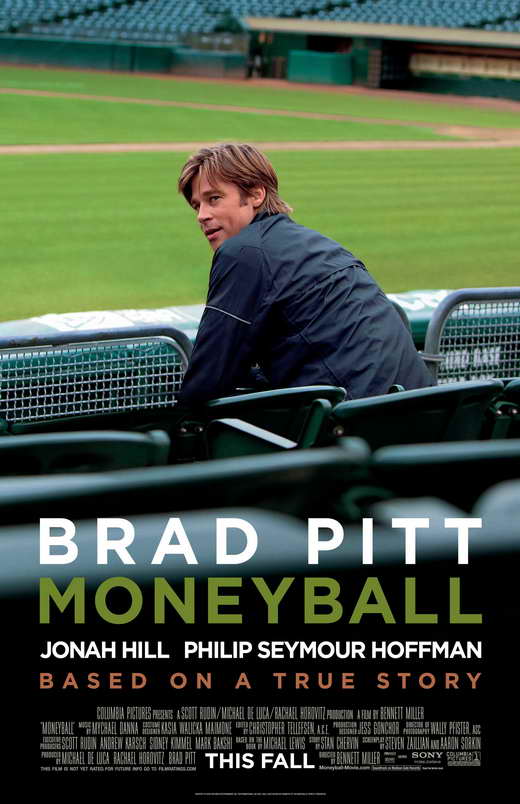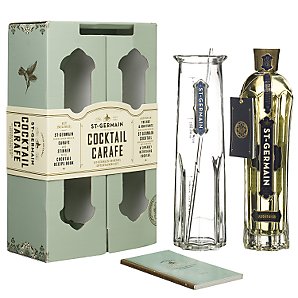
This week, my movie class had a rare weekday bonus screening of the new Brad Pitt film, “Moneyball”, which also stars Jonah Hill and Philip Seymour Hoffman.
Synopsis
When the General Manager of a small market Major League Baseball team becomes frustrated by the budgetary constraints that prevent him from signing the big-name free agent players, he enlists the aid of a young man with a brilliant mathematical mind to help him find the best bargain-basement players he can afford – but can this approach really produce a winner?
Story
As General Manager of the Oakland Athletics baseball team, Billy Beane (Pitt) thinks he may have assembled a winning group in 2001 – but after his team loses to the soon-to-be Pennant-winning New York Yankees, his disappointment is only matched by his frustration when three of his key players abandon him for the more lucrative offers of big-market major league teams upon their ascent to free agency. Despite his pleas for a larger payroll budget being declined by the team’s owner, Beane is determined to field a competitive team for the next season.
When his quest to maneuver trades for players he can afford comes up empty, he discovers Peter Brand (Hill), a bright young man whom Beane soon learns has the ear – and the trust – of his boss, the General Manager of the Cleveland Indians. Impressed by Brand’s enthusiasm for the game and in-depth comprehension of the underlying statistics behind it, Beane hires Brand and immediately names him Assistant General Manager of the A’s. Together, they set out to build a quality team on the cheap in an unorthodox way – by contracting players who are relatively inexpensive because other teams have given up on them.
After assembling a motley collection of big league rejects, the following season does not start off as planned; only a month and a half into 2002, Oakland finds itself in last place in their division. Following Beane’s shakeup of the team, the players start to jell and go on to enjoy a record-setting winning streak. But all is still not well – both his field manager Art Howe (Hoffman) and the team’s top scouts mutiny against Beane’s unusual tactics. Nevertheless, Beane stands by Brand and his unique method throughout the remainder of the season. But can the team achieve their goal of making it far into the post-season?
Review
As many people already know, this movie is based on a book, which itself is based on the true story of Billy Beane, who started out life as a so-called baseball “phenom” who forsook college to instead sign a contract with the New York Mets straight out of high school. When his playing career didn’t pan out, Beane became a baseball scout and then rose through the ranks until becoming a General Manager. Since the movie covers this amount of back-story, it transforms “Moneyball” into a story much larger than just baseball – for me, it is a story of redemption where Beane not only seeks the professional success that eluded him in his youth, but also, about validating the various decisions he made in his personal life as well.
The film hits on all cylinders – directing, script and acting – and therefore, I highly recommend you see it while it’s in the theaters; don’t wait until it can be downloaded – it’ll be worth the time and expense to see it as soon as possible. “Moneyball” will appeal to both baseball fans and non-fans alike; while containing plenty of stats to hold the interest of most baseball nerds, non-fans will appreciate it because of the universality of its examination of the human condition. There is no love story per se (unless you count Beane’s passion for the game), but the filmmakers utilize the character of Beane’s 12 year old daughter to humanize him and thus make the protagonist more capable of being rooted for. To me, this was the one shortcoming of an otherwise excellent movie; the obvious dramatic conceit was unnecessary and distracting from the main story, despite a good performance by the actress in the role of Beane’s child. The use of her song, the lyrics of which were somehow supposed to be mirroring Beane’s life was a little too obvious for my taste.
After the screening, our instructor interviewed director Bennett Miller. Miller said that the project had been in churn through the Hollywood system for a number of years due to various misfortunes; with Pitt attached to it as both star and co-producer, Miller was contacted by Pitt two years ago and eventually, the casting and financing of the film started to come together. Miller mentioned that his favorite part of the filmmaking process was post-production; “The editing is where the film is really made”, he said. Keeping that in mind, he also informed us that he was in post-production on this movie from November of 2010 right up until only a few weeks ago. His previous directing experience of a feature film was “Capote”, which starred Philip Seymour Hoffman, with whom he went on to form a friendship which is how he came to be cast as the manager in “Moneyball”.






